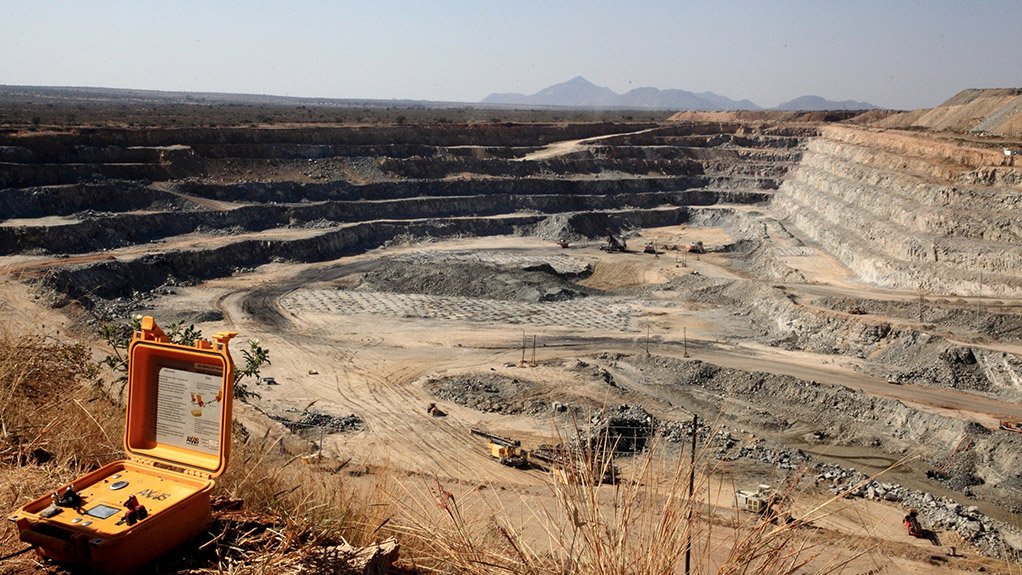Globally, every year there are about two recorded explosions at opencast mining operations due to lightning strikes during blasting activities, explosives firm BME blasting science director Tony Rorke tells Mining Weekly.
He explains that, if lightning strikes a blast area that has been charged, the lightning might cause the explosives to detonate and the associated uncontrolled ejection of rock from the detonation could possibly injure nearby people or damage neighbouring structures.
The most serious consequence associated with lightning strikes at opencast mining sites is risk to life from a strike nearby, Rorke stresses, as surface mining takes place in the open.
“It is important to make mines aware of the potential benefits of a prediction system,” he notes, citing that lightning affects drill-and-blast operations globally almost daily during the summer rainfall months. However, despite numerous reports of lightning strike incidents, most companies do not fully understand the impact on explosives or on people working in the vicinity.
Rorke highlighted the risks associated with lightning strikes during blasting at opencast mines at the Drilling and Blasting Conference, organised by BME on November 3 at the Council for Scientific and Industrial Research, in Pretoria.
He noted at the conference that lightning had a major impact on productivity, especially when false alarms caused unnecessary clearing of a pit. Therefore, lightning prediction systems needed to be multifaceted to achieve a high level of confidence.
“Lightning detection systems and services are not expensive, but a good lightning prediction system will cost a few million rands, as it involves setting up a control system and charge monitoring antennas around a pit. However, the cost is small, compared with the cost of clearing a pit unnecessarily based on false alarms.”
Rorke explained that a detection service worked best in conjunction with a prediction system, as the detection technology sensitised a mine to the increased risk of a strike, while a prediction system warned of an impending strike. Using only a detection service resulted in unnecessary downtime, because whether a pit needed to be cleared was vague, resulting in many expensive false alarms, Rorke stated.
BME highlights that, in many cases, blasters might not have access to detection or prediction systems and rely on counting the delay between a lightening flash and the arrival of the associated thunder to estimate the distance of the lightning from their location.
Rorke stated that most large surface mines relied on small portable devices that detected raised electrostatic activity and, therefore, provided an indication of nearby lightning. “These are carried by blasting foremen and are used subjectively to decide whether to withdraw people to safety.” Both the portable units used by mines and the weather services rely on detecting strikes rather than predicting them.
An additional service provided by weather bureaus in affected countries is a countrywide network of sensors that can detect and locate every lightning strike that occurs. This enables a weather bureau to track storm speeds and directions, as well as the strength of each lightning strike, warning mines of possible approaching thunderstorms.
South Africa, Rorke said, had a service that provides lightning-strike detection and positions for custom zones, for example, a 10 km zone around a mine. However, there are a few modern systems available that complement this to predict when, where and how large a strike will be. These systems rely on measuring the electrical charge of the ground within a zone which detects the increase in the risk of a lightning strike.
Rorke added that an important aspect of lightning risk mitigation was predicting a strike, as, in many cases, the first strike in an approaching storm was the most energetic and damaging, often occurring under blue skies.
“Detection systems are unable to predict this type of dangerous strike,” he pointed out.
BME tells Mining Weekly that it supports and encourages the installation of lightening prediction networks.
The company explains that when electric detonators were still commonly used to initiate the detonation of quarry blastholes or surface lines in nonelectric blasts, lightning was a serious hazard to blasting operations in a pit.
Electric detonators are an old technology from the early 1900s that is extremely dangerous in lightning-prone areas, as it can be easily initiated by stray currents.
However, BME says modern electronic delay detonators are equipped with effective protection barriers to prevent them from being initiated by the majority of nearby or direct lightning strikes. “Such detonators are actually safer to use in lightning-prone areas than most other initiation systems,” maintained Rorke.
The benefits of using electronic delay detonators include control over environmental impacts, improved crusher and mill throughput, diminished ore dilution, lowered wall damage and timing design flexibility, enabling engineers to design timing to cater for complex blasts.
Edited by: Tracy Hancock
Creamer Media Contributing Editor
EMAIL THIS ARTICLE SAVE THIS ARTICLE
To subscribe email subscriptions@creamermedia.co.za or click here
To advertise email advertising@creamermedia.co.za or click here













